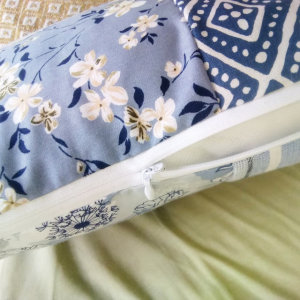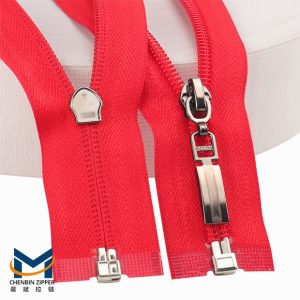The Role of Zippers in Garment Functionality
The Importance of Zipper Selection
Choosing the right zipper design to maintain your garment functions and last longer. Material compatibility, anticipated stress levels and environmental conditions are among the factors that should inform your selection process. For example, lightweight clothing items may use a nylon zipper to utilize its flexible fabric and smooth movement feature. On the other hand, a metal zipper might be better for heavy-duty use because it’s much stronger.
Enhancing User Experience with Zippers
Zippers make it convenient for the user with ease of fastening quickly and securely. They make it easy to put on and take off garments which is a big plus point in activewear and outerwear. New zipper designs can also enhance comfort, such as stitching to avoid rubbing or zippers from catching on the fabric. Reverse coil zippers, for example, have a clean look but keep the teeth shielded against abrasion.
Detailed Analysis of Zipper Components
Understanding the components of a zipper is essential for optimizing garment design. Each element contributes to the zipper’s overall performance and suitability for specific applications.
Anatomy of a Zipper
A zipper consists of several key components: tape, teeth, slider, and stops. Each part plays a distinct role in the zipper’s operation.
Tape Materials and Types
The tape is the base of the zipper, it holds and connects the teeth together and to the fabric. Usually made from polyester or cotton depending on the garment’s durability needs, and compatibility with other materials in the garment. Most likely produced from polyester or cotton depending on sturdiness requirements and vegetation of material to put on garments.
Teeth Design and Materials
Zip tooth is made of metal (representative) plastic or nylon coils. Depending on the material, zipper strength and aesthetic quality can also be enhanced. Metal teeth give durability and have a more traditional appearance, whereas nylon coil zippers are more pliable and suited for use where concealed. Metal teeth give strength and a more timeless look, while the nylon coil zippers are flexible and perfect for concealed applications.
Slider Mechanism and Variants
The main part of the zipper to open and close the zipper is based on a slider that interlocks or separates the teeth. Locking sliders like the variants that prevent it from opening accidentally, while non-locking ones permit smooth operation in less demanding applications. Locking slider variants prevent accidental opening, while non-locking sliders provide smoother operation for less rigorous applications.
Innovations in Zipper Technology
Advancements in technology have led to innovative zipper designs that enhance functionality and broaden application possibilities.
Waterproof and Weatherproof Designs
Waterproof zippers are engineered to prevent water ingress through specialized coatings or sealing mechanisms. These zippers are essential in outdoor apparel where protection against moisture is critical.
Self-repairing and Reversible Zippers
These zippers are equipped with a system that re-establishes the alignment of teeth out of place during use, increasing their service life. Reversible zippers make it possible for clothing to wear inside-out without looking or functioning poorly. The Reversible Zippers enable wearing a garment inside-out without sacrificing appearance or function.
Integrating Zipper Design into Garment Aesthetics
Zipper design can significantly influence the visual appeal of garments, offering opportunities for creativity and brand differentiation.
Color and Finish Options for Visual Appeal
Zippers are available in an array of colors and finishes that can complement or contrast with garment fabrics.
Matching with Fabric Colors
Choosing zippers that match fabric colors creates a cohesive look, enhancing the overall aesthetic harmony of the garment.
Unique Finishes for Fashion Statements
Special finishes such as metallic sheens or matte textures can transform zippers into statement pieces that add flair to fashion-forward designs.
Customization Possibilities in Garment Design
Customization options allow designers to tailor zippers to specific branding or stylistic needs.
Branding Opportunities with Custom Pulls
Custom pulls featuring logos or unique shapes provide branding opportunities while adding distinctive touches to garments.
Incorporating Decorative Elements
Zippers can incorporate decorative elements such as beads or embroidery to elevate garment designs into artistic expressions. This versatility allows designers to push creative boundaries while maintaining practicality.
Impact of Zipper Components on Durability and Maintenance
Understanding the impact of zipper components on durability and maintenance is crucial for designing garments that withstand the test of time.
Assessing Wear and Tear Resistance
Zipper materials and construction quality mostly dictate the zipper’s wear and tear resistance. So just to be sure zippers go through intensive testing to check that they can withstand all situations without a performance issue. For example, the zippers in outerwear are very exposed to elements and therefore need durable materials such as metal or treated nylon that will withstand corrosion and abrasion. Longevity testing simulates environmental conditions like humidity, temperature fluctuations, and mechanical stress to determine how well zippers perform through years of use.
Testing for Longevity in Different Conditions
Zippers are subjected to more extensive testing that mimics real-world use, and it is highly unusual for a zipper to fail. These tests consist of cycles passed for repeatedly opening and closing, UV light exposure, and immersion in water to mimic rain or sweating. By knowing how various elements behave as above, designers can choose zippers that provide the best performances in terms of durability against the end-use application.
Maintenance Tips for Prolonged Use
Proper maintenance is essential for prolonging the life of zippers, ensuring they continue to function smoothly throughout the garment’s lifespan.
Cleaning Guidelines for Various Materials
Too, if you are careful about fabric then they are attached with different zippers a need to be cleaned carefully. Dry the metal zipper to prevent rusting, and gently clean the nylon zipper with soap and water. A regular application of silicone spray lubricant will keep the sliders moving freely, preventing them from sticking. For garments that spend a lot of time in dirt or saltwater, rinsing the zippers out with freshwater afterward will help ensure that there is nothing left inside to clog up the works like.
Future Trends in Zipper Design for Garments
As fashion evolves, so do the trends in zipper design, driven by technological advancements and a growing emphasis on sustainability.
Sustainable Practices in Zipper Manufacturing
The fashion industry is increasingly prioritizing sustainability, prompting manufacturers to adopt eco-friendly practices in zipper production.
Eco-friendly Materials and Processes
Materials scientists have developed new biodegradable and recycled materials that zipper makers can use in the zipper components. For instance, there are manufacturers looking into plant-based plastics or recycled metals instead of regular materials. These environmentally friendly choices help minimize your carbon footprint without compromising on performance. Furthermore, it also leads to sustainable zipper production via processes like low-energy assembly methods and waste minimization measures.













